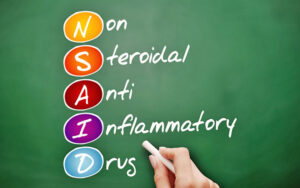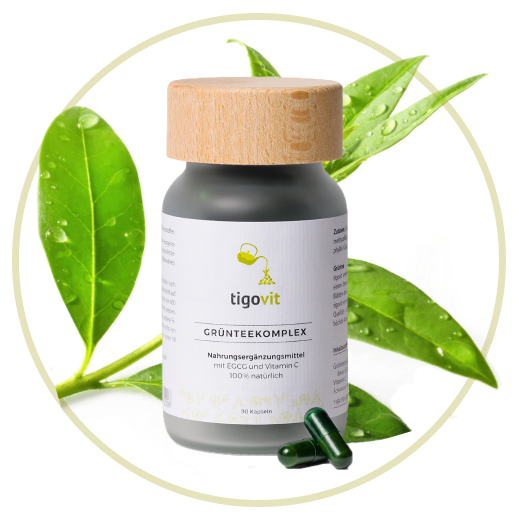Author Nina Ebert, Biologist
Why is there pain?
Pain is, by medical definition, an unpleasant sensory sensation caused by actual or potential damage to tissue. This means that pain has a vital alarm and protective function in case of danger of injury or even death.
Pain is triggered by certain stimuli such as injuries, cold, burns, pressure or internal complaints such as inflammations or a disturbed nervous system. The nervous system transmits the stimuli to the brain. However, the brain does not have any direct pain receptors, so it does not feel pain itself.
Pain is based on a subjective perception that varies greatly from person to person. The causes of pain are not always purely physical. The psyche has a considerable influence on the perception of pain. Psychosomatic pain caused by strong emotional stress is not uncommon. The sensation of pain can be intensified by grief, but reduced by joy. There is acute pain and chronic pain, the latter being a disease in its own right. The original alarm function has lost its meaning here.
Painkillers - anti-inflammatory, antipyretic, direct

NSAIDs - pain inhibition through reduced prostaglandin synthesis
In contrast to the "classic" painkillers, the opioids, which block pain receptors, painkillers of the NSAID class inhibit prostaglandin synthesis. Prostaglandins are hormones that cause the sensation of pain and certainly also have important signalling properties. Reduced prostaglandin synthesis means less pain sensitivity of the nerve fibres and causes a decongestant effect. NSAIDs block the function of the two central enzymes of prostaglandin synthesis, the enzymes COX-I and COX-II, or just COX-II.
What are the risks of taking NSAID painkillers?
In addition to the positive effects for many people, however, NSAIDs sometimes entail high risks and severe side effects in the long term. The painkillers are considered so-called OTC drugs ("over the counter"), which can be bought without a prescription in pharmacies. Especially in the case of long-term use, the risks and side effects should definitely be taken into account, because the consequences should not be underestimated.
- Damage to the gastrointestinal tract and microbiome

In addition, some NSAIDs as well as acid blockers cause a shift in the gut microbiome. The consequences can be malabsorption, flatulence, as well as nausea and diarrhoea. The growth of unfavourable bacteria in the gut can also result in allergies, immune deficiency and susceptibility to infections, as well as psychological problems such as depression.
- Increased risk of cardiovascular disease
The American Food and Drug Association (FDA) warns that the risk of heart attacks and strokes can increase significantly in the first week of taking NSAIDs and can worsen with prolonged use, even without a cardiovascular history and at a young age. Numerous studies and experts warn of risks of high blood pressure, bleeding due to thinning of the blood, as well as embolisms and thromboses, which are significantly increased by medium-term and long-term use of NSAID painkillers. A study at the Aarhus University Hospital in Denmark investigated the risk of cardiovascular diseases when taking NSAIDs among 6.3 million adults between 40 and 60 years of age. It was found that even a small amount of diclofenac caused a higher number of cardiovascular symptoms (heart attacks, strokes, heart failure) within the first 30 days than, for example, ibuprofen or paracetamol. According to lead researcher Morten Schmidt, there is "no reason to prescribe diclofenac."
- Liver and kidney damage
According to Dr Anton Gillessen from the Clinic for Internal Medicine at Herz-Jesu-Krankenhaus in Münster, long-term use of NSAIDs and the combined use of several preparations is particularly dangerous. When the active substances add up, critical values are quickly reached, especially if the liver is already burdened. In addition, excessive use of NSAIDs is a risk factor for renal insufficiency, not only for people with kidney diseases and disorders of the water balance.
- Interactions with other medicines
Painkillers such as ibuprofen can interact with blood thinners, anticoagulants and diuretics, as well as some antihypertensives, when taken for long periods of time, which can affect the effect of both drugs involved.
In summary, there is an urgent need for alternatives to NSAIDs, especially in the management of chronic pain. There are catchy warnings about NSAIDs and the high risks, yet they are still freely available. So what life hacks are available to treat pain?
The best natural painkillers
Instead of ibuprofen, ASA (acetylsalicylic acid) and co., there is a whole range of effective natural methods for pain relief and alleviation - sustainable and free of side effects.
- Cryotherapy
Cold shock produces the so-called cold shock proteins (CSP), a special class of proteins that curb inflammation and promote tissue regeneration. An effective cold shock is provided by regular ice bathing or a cold chamber for explicitly designated cold therapy. Besides reducing inflammation, cryotherapy also has other biological effects in the body such as stimulating blood circulation, cell regeneration and many more.
- Compresses - hot and cold alternately
Especially for muscular injuries and complaints, simple compresses, hot and cold alternating, can achieve a very simple and effective effect. The anti-inflammatory effect is produced by the temperature change between heat and cold. Both cold shock and heat shock proteins are increased in production, while the pressure of the compress restricts blood flow to the wound. This in turn reduces swelling and inflammation. - Acupuncture - Traditional Chinese Medicine (TCM)
The ancient technique of acupuncture involves placing needles at specific points along the meridians. Each point has a specific effect according to TCM. Acupuncture effectively relieves painful nerve pathways, stimulates the release of endorphins, reactivates the flow of energy where it was blocked and thus promotes healing in the long term.
- PEMF - Pulsating Magnetic Field Therapy

Many surgeons recommend PEMF as an effective post-operative method to minimise inflammation - inflammation is the source of pain. A double-blind, placebo-controlled clinical trial investigated pain perception and recovery in 29 patients with tendinitis (inflammation of the tendon) in the shoulder. At the end of the study, 19 (65 %) of the 29 patients were asymptomatic, and five other patients were significantly better. PEMF therapy may therefore be very effective in treating persistent rotator cuff (upper arm/shoulder) inflammation and possibly other chronic tendon injuries. It is also used to recover faster after workouts and keep inflammation levels down. The technique uses electromagnetic pulses that resonate through the tissue to gently stimulate anti-inflammatory and repair mechanisms. PEMF treatments are available in physiotherapy and chiropractic practices if you don't want to buy your own device, which costs around €1,000.
2. TENS - Transcutaneous Electrical Nerve Stimulation

- Massage therapy
A professional massage such as deep tissue massages or soothing full body massages with warm oil can also work wonders in the long term. Massages relax the muscles as well as the brain, contribute to improved blood and lymph circulation, stimulate detoxification and thus also stimulate anti-inflammatory mechanisms and the body's self-healing powers. Relaxed tissues can help release tension and thus relieve pain.
Summary
Painkillers such as ibuprofen from the NSAID class undoubtedly have their raison d'être, but they have strong side effects when taken continuously. It is important to take the risks and side effects of long-term use seriously and to talk to your doctor or therapist about possible, suitable alternatives of manual therapy, traditional naturopathy, acupuncture or the targeted supply of antioxidants before taking steps on your own.
Sources:
https://pubmed.ncbi.nlm.nih.gov/26482265/
https://link.springer.com/article/10.1007/s00109-014-1136-3
https://www.sciencedirect.com/science/article/abs/pii/S0140673684922190
https://www.ncbi.nlm.nih.gov/pmc/articles/PMC2746624/



